All about terracing a site
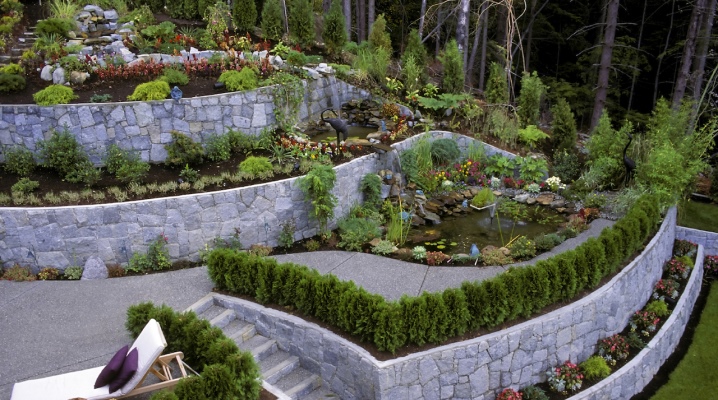
Sloping plots are not a problem, as there is always a possibility to arrange them well with terracing. An inconvenient slope can be arranged in the form of horizontal terraces reinforced with retaining walls. Moreover, it is permissible to organize sites with both straight lines and curved ones. Vases with flowers, small fountains, ornamental plants, and special lighting can become a pleasant addition to the terraces.
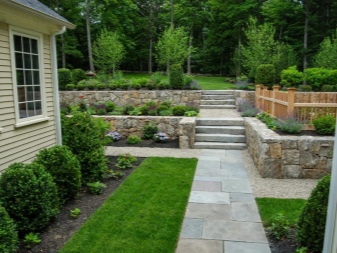
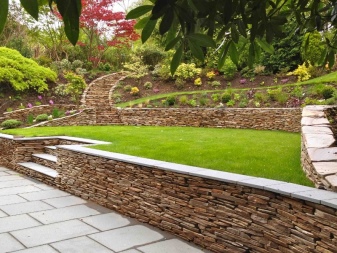
Peculiarities
Terracing of the site is necessary where there are slopes. As a rule, it is used only after an adequate assessment of the size of the site. Within one land plot, you can make two, four or more terraced areas. In sloping areas, landslides can be prevented in this way. Terraces can be decorated in an individual style, but in general, the entire site should look harmonious.
Begin terracing by leveling the surface. For this, an eye survey is carried out in order to understand how many terraces there will be and what size protrusions should be made. After that, it is necessary to break the slope with pegs into segments (1.5 times the width of the terrace), starting from the top and gradually moving down. Then, moving across the inclined area, use the level to find the point at the level of the first peg. Additional pegs are placed in them and a line dividing the slope horizontally is determined.
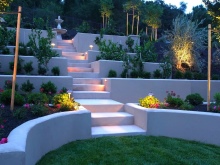
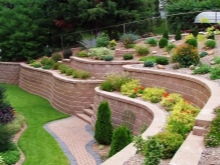
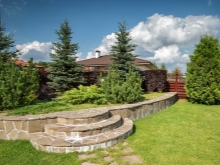
When the work with the first line is completed, you should go to another peg and determine the second contour, and so on. After that, you can form sites. When backfilling, the surface of the site is made with a slight slope, which will be opposite to the slope on the slope. To strengthen the terrace, a wall is created in the form of a support.
It is important to decide in advance on the design of the latter, as it will greatly attract attention.
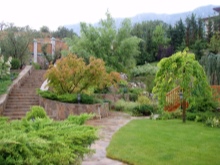
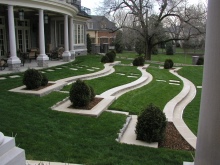

Views
Before making a terrace, it is worthwhile to foresee how it will be combined with the buildings on the site. It is important that its layout takes into account the placement of arrivals, paths and large trees. The entire landscape composition should look holistic and harmonious. In this case, it is advisable to make the relief as natural as possible. Depending on the features of the area, terraces can be subdivided into separate types.
- Ridge have a minimum slope equal to two centimeters, and the maximum - eleven centimeters. As a rule, a shaft with a height of 35 to 40 centimeters is created along the transverse line of the slope. Such terraces are the best option for growing bushes of table grapes, such as Helios, Blagovest, Virgin Mary and others.

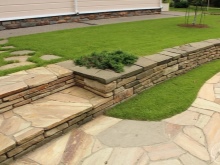

- Trench best suited for growing tea herbs such as chamomile, sage, heather. They will need a slope of 15 centimeters. When organizing such terraces, up to 50 mm of the soil layer is removed. The resulting trench should be filled with soil suitable for tea crops.
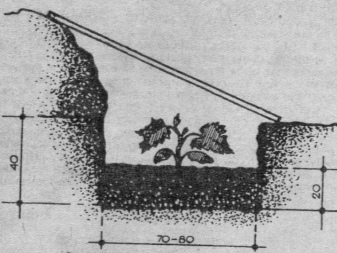

- Stepped options are good if the slope on the site starts from 13 centimeters. In order for such terraces to be resistant to adverse weather conditions, they should be overlaid with natural stone. This will go well with compositions where trees and wild berries are present.
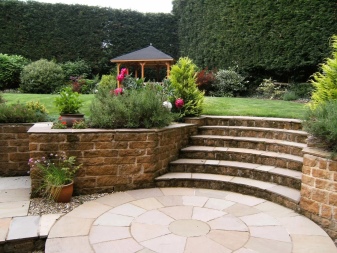
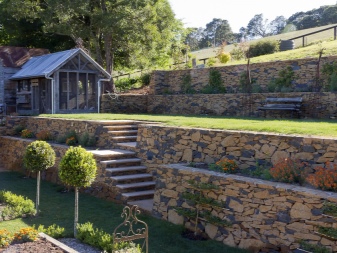
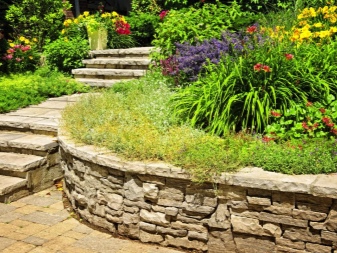
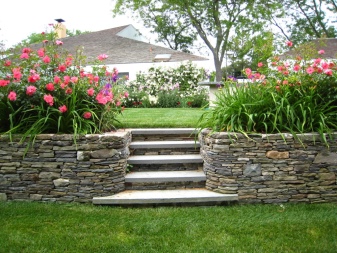
- Ditch terraces, as a rule, they are organized in areas where a thin layer of soil is observed. When arranging, the land can be taken from the drainage system. Shafts are made from it, the height of which can reach 3 meters. Fruit and berry plants can be planted on them.Currant bushes take root well on them, as well as apple, pear, mountain ash, quince.
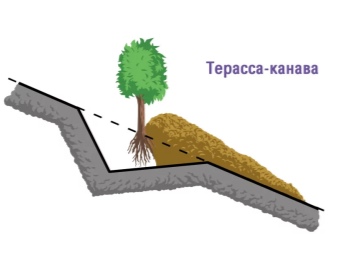
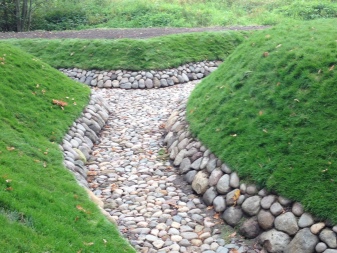
When choosing a terrace, it is important to take into account, in addition to the minimum slope angle, the desire to equip recreation areas on the slope, as this will affect the materials that will be used in the landscaping.
Retaining walls
Retaining walls is a structural element that is central to the creation of many structures. In areas with a slope, such walls allow the soil to be fixed so that it does not move. The design features, its shape and decor depend on the load on the walls and on the style in which the territory is decorated.
It is worth noting that reinforcing walls can be easily created with your own hands, even in the absence of certain skills.
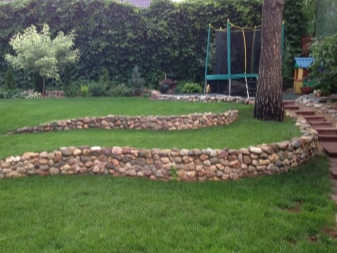
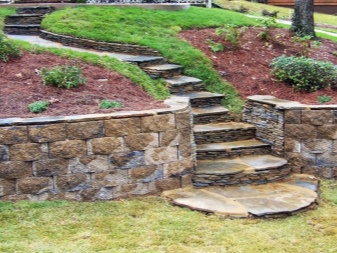
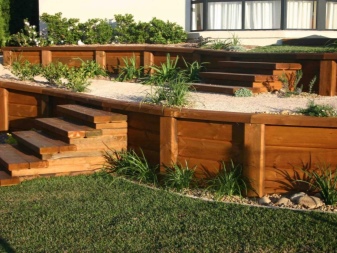

Walls for supporting terraces are divided into two types.
- Lungs, which are built without a base and reach a maximum of a meter in height.
- Capital ones are made with a gravel cushion and can be 2-3 meters high and 20 centimeters wide. In this case, the foundation should be about 650 mm thick. Moreover, it must be borne in mind that the higher such a wall, the thicker its base should be. Otherwise, the structure will have deformations, which will eventually lead to its destruction.

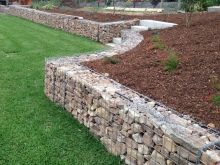
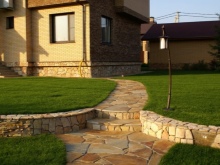
Retaining walls can be made of various materials: natural and artificial.
Wood is a natural and beautiful option at an attractive price. However, it must be borne in mind that wooden walls have a short service life. It is best to take logs or beams during construction. If the height of the support is one meter, then the height of the logs should be 1.5 meters. Of these, 1 meter will be above the ground, and the remaining 0.5 meters will be below it.
To equip a wooden wall, it is necessary to dig a trench, which should exceed the width of the beams by 20 cm and their underground length by 10 cm. Crushed stone is poured onto the bottom and rammed. After that, the bars can be set to each other and very tightly. Fastening them together is carried out using wire or nails, and then sprinkled with rubble.
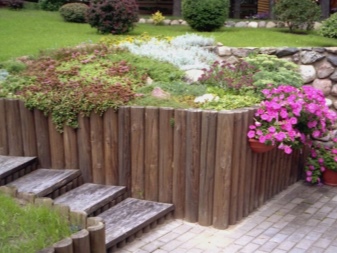
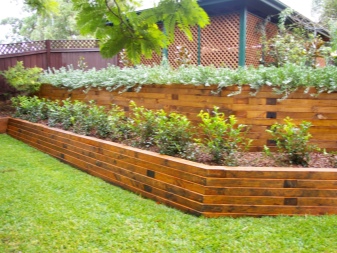
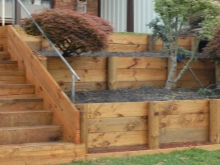
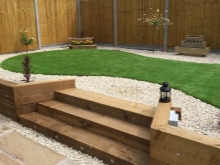
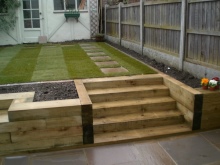
The inner part of the wall is covered with roofing material. You can also fill the trench with concrete, and then fill it with earth. To protect the timber from moisture, it can be burned or coated with special agents, for example, hot bitumen.
Concrete is inferior in beauty, so it is recommended to decorate it using tiles, shingles or pebbles. The construction of a retaining wall made of concrete begins with the construction of formwork, for which boards or wooden panels are taken. From the outside, props must be made that can withstand a lot of weight. It is necessary to put massive stones on the bottom of the formwork, and cover the empty space between them with gravel. After that, a thin layer of concrete is poured onto the stones.
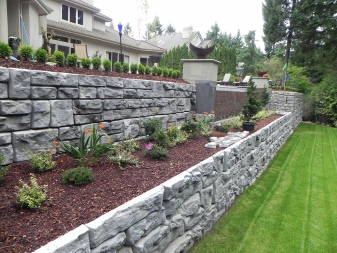
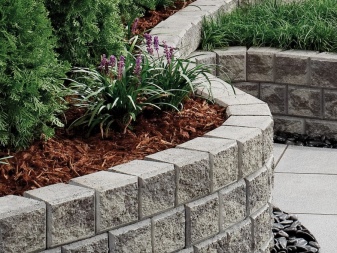

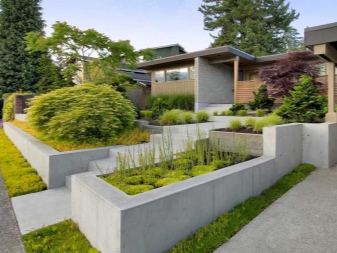
The process of laying stones with concrete pouring must be repeated until the formwork is completely filled. To drain water at a level of 50 mm from the surface of the earth, drainage pipes are laid.
The brick looks very good as a wall, but only if it is of high quality and beautifully laid out. This option is best suited if there are already brick structures on the site. Retaining walls are well made of clinker bricks, which are durable and resistant to moisture.
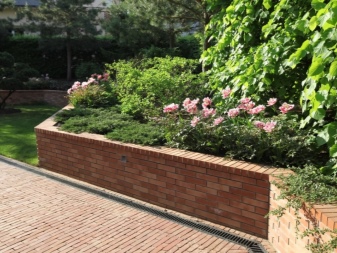
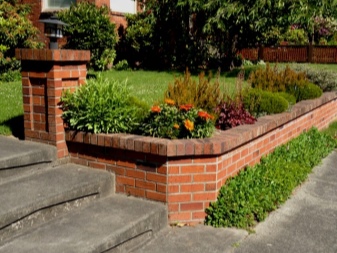
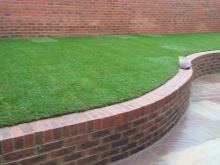

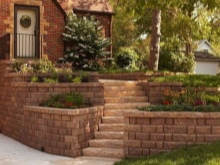
The creation of such a wall necessarily requires a foundation. When laying the first row of bricks, holes are made to drain water from the slopes to the lower terrace. The height of the brick wall must match its width correctly. For reinforcement, the lower part of the wall (about five rows of bricks) is thickened by 1.5 or 2 bricks. For laying bricks, a mortar is used, which includes cement, sand and water in a ratio of 1: 3: 3.
The stone version of the retaining structure is the most expensive, but at the same time it has the longest service life. Walls are made of chipped or sawn stone without processing from granite, basalt or quartzite.You can choose a wide variety of wall shapes.
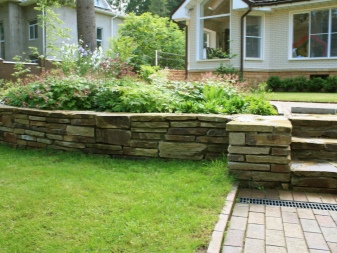
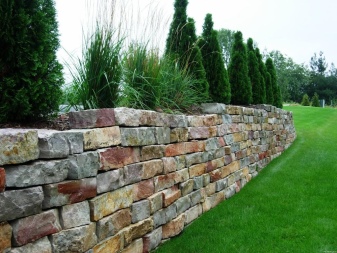

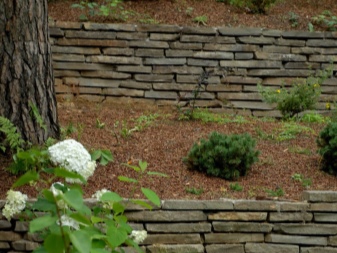
On the border of the upper edge of the wall, you can plant vegetation that spreads. It will be able to hang down to cover vertically located surfaces. If you attach a wire or rope to the walls, then it will become a good support for flowers of curly species. Moreover, you can make niches right in the support and put special containers with plants in them.
- Gabions - these are modern high-density nets that are filled with stones. Such structures withstand strong winds and an abundance of water well. Convenient materials allow very quick installation work. Approximately 2 times faster than building retaining walls from other materials.
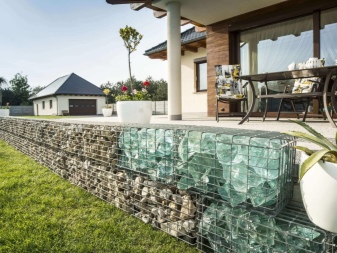
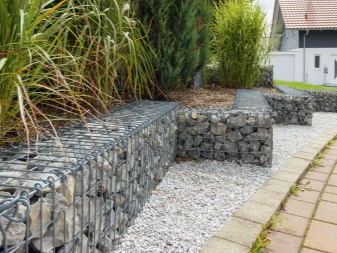
- PVC sheet piles are lightweight and inexpensive. When creating walls from them, special rolled metal is immersed in the ground. This is done to increase strength and prevent ground movement. Such a retaining wall will turn out to be of high quality and ideal in terms of geometry.
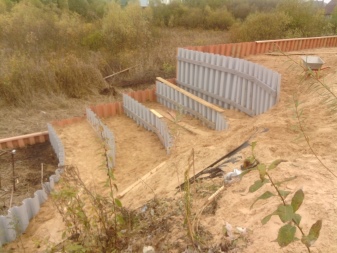
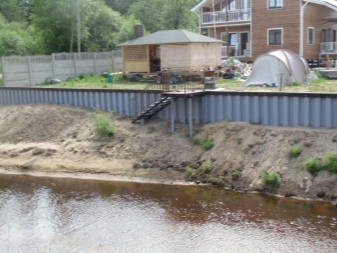
In addition to the above materials, terraces can be strengthened with concrete blocks, as well as gas grates and geomats. When installing the latter, the slope must be leveled, tamped and dug a trench. In this case, it is important to fix the edges of the geomats in the recess. Thus, the land mass will be able to shift by less than one percent.
Beautiful examples
You can plant fruit trees on the terraces, but grapes or bright clematis are good for decorating the supports. Begonia or verbena will look good on the tops of the retaining walls, and the space along the open stairs can be filled with noble ivy. Climbing plants such as sweet peas can be planted along the border of the retaining walls.
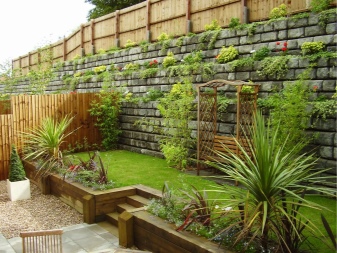
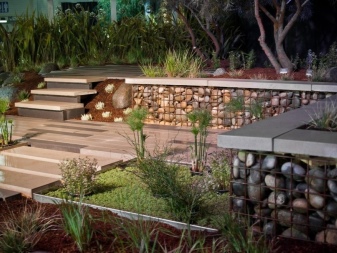
Small flower beds or flower vases will be an excellent solution for decorating terraces. Terraced areas look nice, where purple clematis are combined with compact flower beds in orange, for example, from calendula. For slopes, it is better to choose unpretentious plants. The main thing is that they are combined with the color gamut and flowering time. Shrubs of wild rose, barberry, euonymus, as well as conifers look great on terraces and at the same time hold the soil well.
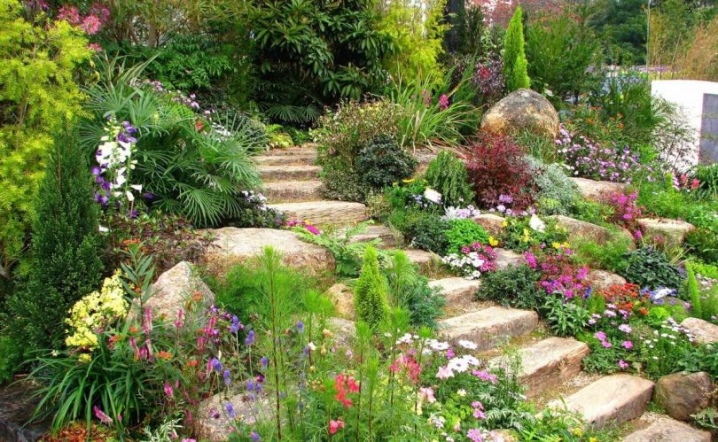
Summer cottages can be favorably emphasized by creating a cascade of small waterfalls at terracing sites. It looks especially impressive when water flows from one terrace to another.
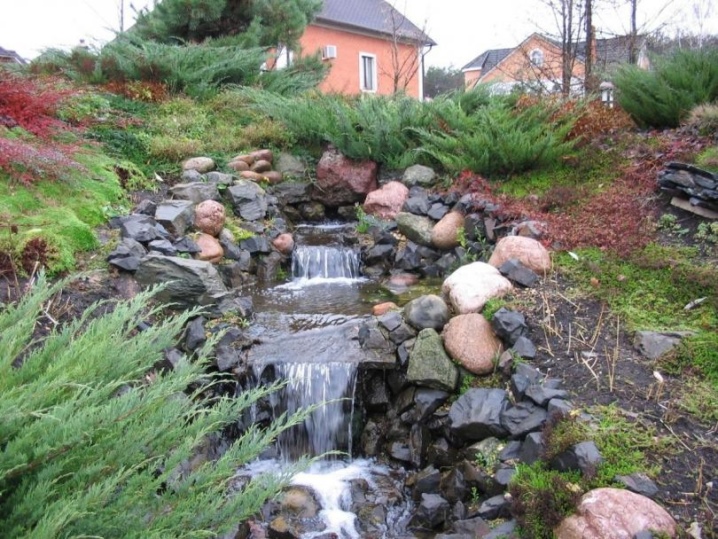



































































The comment was sent successfully.